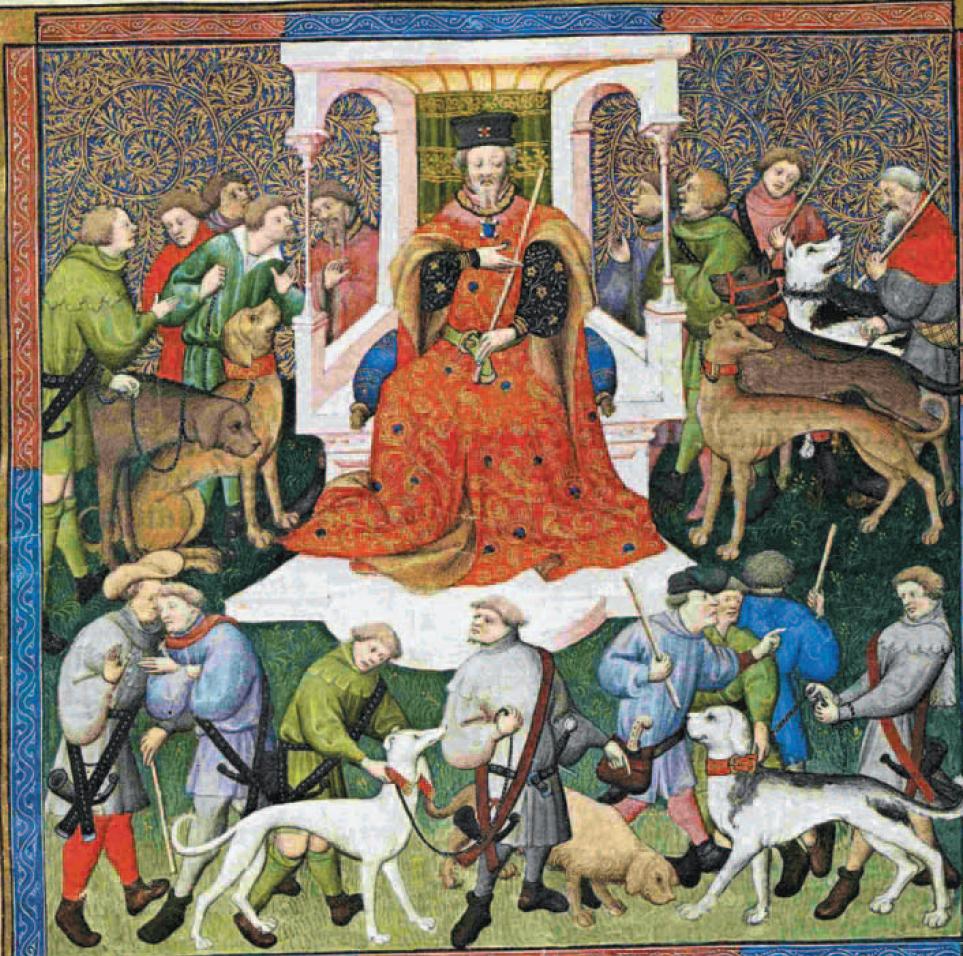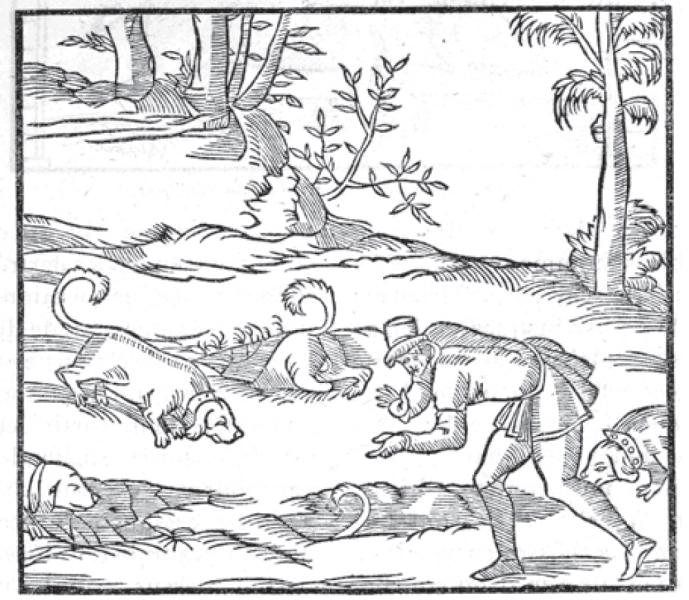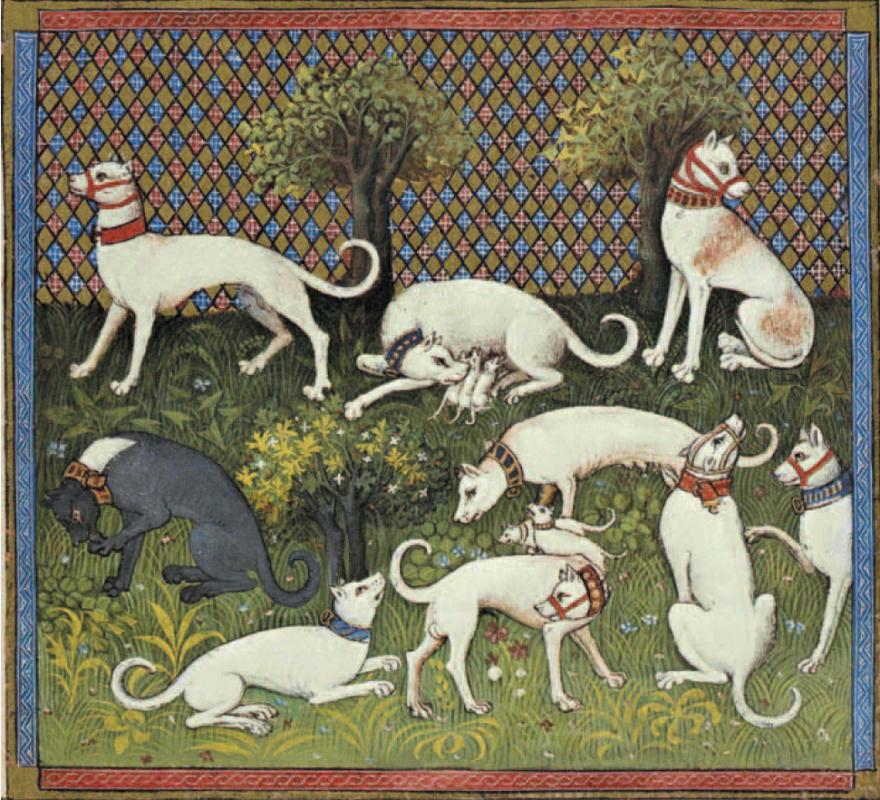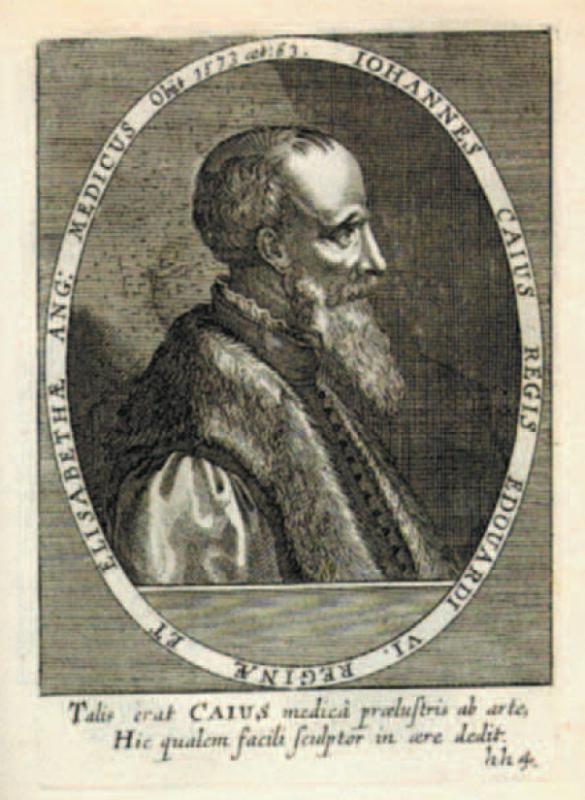Read the whole article and more in the FCI Centenary Book
www.fci.be/onlinecatalogue.aspx
Raymond TRIQUET, France
Senior « Maître de Conférence » at the University of Lille III,
former President of the FCI Standards Commission
Translation: Jennifer Mulholland
It is usual to state that the dog was the auxiliary of man and bred as such, for
hunting, protection and much later for herding livestock, guarding the home and
farm and for company, the dog consoling man for being man. The phrase “the dog loves
man” is inconceivable without its reverse “man loves the dog” and there we have
the essence of “cynology”.


Enluminures de Gaston Phoebus
(Livre de Chasse)
The love which man gives to dogs is very ancient and responds to the attachment
of the dog to its master, its loyalty, its indefectible devotion. As early as the
XIIst century Brunetto LATINI, from Florence and established in France, who divided
dogs into large and small sizes (an attempt of organization), sings the love which
the dog shows us: “Chiens aime plus home (homme) que nulle beste” – “Dogs love man
more than any other animal” (Le Livre du trésor). In the middle of the XIVth century,
Henri DE FERRIÈRES, Lord of Gisors, already a talented hunting technician, recognizes
the qualities of the dog “Homme, o regarde (…) que chien (…) ait plus de bonté de
cuer (Coeur) que tu n’as” (Man, oh look (…) that the dog (…) has a kinder heart
than you). There exist few appreciations so beautiful and which still move all dog
lovers as these lines written at the end of the XIVth century by Gaston FÉBUS (Gaston
III of Foix-Béarn, 1331-1391), in his Livre de Chasse of which, according to TILANDER,
44 magnificently illustrated manuscripts exist around the world:
C’est la plus noble beste et plus raisonnable et plus cognoissant (intelligente)
que Diex fist onques (que Dieu ait jamais faite) (…) Chien est loyal à son seigneur
et de bonne amour et de vraie (…). Tant sont bons chiens que a poines (à peine)
est-il homme qui ne vueille (veuille) avoir ou pour un mestier (service) ou pour
autre. Chiens sont hardis, quar ( car) un chien osera bien deffendre l’ostel (la
maison) de son maistre et gardera son bestialli et tout ce qui sera dou sien (son
bien), et s’en exposera a mort.
(It is the most noble and most reasonable and most intelligent animal that God ever
created (…) the dog is loyal to its master and of good and true love (…) Dogs are
so good that there is hardly a man who does not want one, use it for one task or
another. Dogs are bold, because a dog will dare protect his master’s home and his
livestock and all his belongings, and will expose himself to death doing so.)
Gaston FÉBUS was entitled to speak about dogs: he owned 1600. We can see that hunting
was not the only “service” rendered by the dog. The dog is devoted to the point
of giving his life and his master recognizes his great qualities and loves him.
The big word is said and the famous chronicler FROISSART, who FÉBUS kindly welcomed
into his court, wrote:
Les chiens sur toutes bestes il amoit (aimait)
Et aux champs, esté et hyver, voulentiers estoit.
Dogs, above all animals, he loved
And in the fields, summer and winter, he willingly went.
The pact of alliance signed between man and the dog in those long past times continued
and became richer in order to pass through the ages. Dogs are at Fébus’ service
and he at theirs as, together with methods of hunting, he taught the care and food
to give them, the means of healing them, hygiene and the art of building kennels:
“The kennel should be ten “toises” long and five “toises” wide (a “toise” is equivalent
to approximately 2 meters) and should have a nice run behind, benefitting from sunshine
all day”. Can we give more judicious advice today? The Livre de chasse is the work
of a precursor. Historians believe that the Middle Ages was not a “backward” era
as one could have thought but a “founding “era. It is the case here. As wrote TUCOO-CHALA,
a FÉBUS specialist, this “great prince of the Occident”: “for centuries these pages
were for ever copied, but never improved”. It is certainly true, even for Jacques
DU FOUILLOUX and his famous Vénerie of 1573.


La Vénérie de Jacques Du Fouilloux,
Charles Lebossé, Angers 1844, p.74
After having described the game animals, from the deer to the otter, through the
hare and the bear, their “nature” and their behavior, even if the word does not
yet exist, FÉBUS taught the art of hunting them, then he came to dogs. He described
the Alan, possible ancestor of the “dogue” whose name only appears in French in
1406 as an insult of the English (dog) towards the French, then in 1480 to describe
a dog “coming from England”. (Trésor de la langue française, volume seven). He divided
the “Spanish” Alans into three categories. The gentle Alans (not because they are
“gentle” in the modern sense of the word but because they are of “noble origin”)
are “shaped upright like a greyhound” except that the head “should be big and short”
(the verb “should” shows that it relates to a norm and that these are true standards
that FÉBUS is creating, and that there were already “short heads”.) The Alans “veautres”
hunted wild boar, coming from the verb “vautrier” or “vautrer” (i.e. to hunt with
boar hounds).. The butcher-Alans do not cost much to feed, “because they eat the
butchers’ waste”. Note that in those times the butcher’s shop was also an abattoir
(in the beginning, the place where the goats were killed).


Enluminures de Gaston Phoebus
(Livre de Chasse)
Hounds were described in extreme detail according to their “ways” of hunting, those
that “se sont tant hastez qu’ilz sont hors d’aleine” (“those that ran so fast that
they were out of breath”), those that “hunted slowly” but who “will hunt all day
long”, those who “scented the wind and others who kept their noses to the ground”.
FÉBUS does not name them because he did not have the same notion of breeds as we
do but the modern hunter will recognize his own. Our expressions are already there:
“the hounds should be good and handsome”. We say “handsome and good”. They have
“all types of coat” but the most common are black “catruillé” (“four-eyed”). There
we already have the expression which our hunters favour with the “four-eyed” (tan
points over the eyes) Gascogne dogs. In 2009 the F.C.I. requested that standards
contain the phrase: “nostrils well open”. The dogs of FÉBUS who are of “good sire
and good dam”, that is to say judiciously reared, or why not “selected”, already
have “big nostrils”. With the “oysel” (bird) dogs or “espaignoulz” (Spaniels), we
again encounter notions of beauty and capacity to work: “white or flecked coat,
because they are the most handsome”. We have often argued against hunting dogs with
excessively long fringes. FÉBUS was far ahead of us: “it should not have too much
coat” (here again the notion, to honor our standards, of what “should” be and of
what “should not” be). These dogs, who came from Spain, should not be used with
the hounds because they are “rioters and barkers”. FÉBUS also uses the expression
“create riot”: “it (the bird dog) will create riot and all the damage”. “Riot” in
the sense of quarrel, havoc (unreasonable behavior) appears in the XIIth century
but is no longer used in the French language. A “rioteur” was a quareller. Whereas,
in modern English riot is an outburst of violence and a rioter is someone who participates.
English hunters use the expression “run riot” and the verb “riot” refers to the
dog which abandons the pack to hunt alone. He thus creates havoc. The word and the
expression “run riot”, “hunt riot” appear in late middle English and originate from
old French. Nice exchange of words between hunters who exercise the same art. Besides
FÉBUS was in contact with the Black Prince, the famous son of Edward III, who ran
rampage in the South West of France but not in the Béarn region. He offered to show
him “some of his science” in the art of hunting.
The “mastin” (Mastiff) is common because “everyone has seen one”. They protect the
livestock and the “ostel” (home ) of their master but they are “vile dogs” (ugly,
bad-tempered). The herding dog, smaller in build, does not yet exist. Coming from
Scandinavia and England, it only reaches the European continent around 1700 (according
to Xavier DE PLANHOL). The Mastiff, used for the protection of herds and as a guardian
can also be, like the Alan, a “good” dog for pigs (wild boar) and for bears and
wolves but does not merit that we dwell on him. It is a fact that he is a brute.
He does not possess the nobility of the hound or the greyhound whose “quality” comes
from a “good sire and a good dam” and good education as “we can help them to become
good”. What is so extraordinarily modern here is the description of the jaws of
which one is “level with the other”. The lower jaw should not project further than
the upper jaw, nor the upper jaw project further than the lower jaw. Here we have,
in the XIVth century, the condemnation of “over/under-shot” and also the proof that
this fault already existed. Likewise, the sighthound is of medium size, neither
too big, nor too small. Extremes are to be avoided and it is exactly in line with
ecologic cynology. The description of the greyhound is complete and detailed and
covers, as today, all the parts of the body, from the head (with “teeth, eyes, ears”)
to the tail without forgetting to mention that a topline “slightly high” is better
than a flat back. Is not the greyhound a convex dog? We have here a true standard
which goes even further than ours because it describes the testicles (small and
tight) and the penis (small and only slightly hanging). It ends with a lesson on
behavior during the hunt: “arrogant with wild animals but courteous, kind, happy
and obedient with his master”. Note that as early as the XIIth century, “despiteux”
meant to “be contemptuous” and we will find this again in BUFFON with the “distainful”
dogs.
The figurative description of greyhounds by Gaston FÉBUS was often reproduced by
authors as was the totality of his Livre de chasse, sometimes even copied by unscrupulous
publishers. The head is the shape of a pike, the neck is “carried like that of a
swan”, the feet are straight and round “like a cat”, “the rat’s tail”, etc. In 1486
(FÉBUS died in 1391 and the first manuscript is dated 1400), Dame Juliana BERNERS
described the good “grehound” in The Boke (book) of St. Albans: :
Heded like a Snake
And necked like a Drake (like a duck but also, perhaps, in those times, like a dragon),
footed like a cat
Note that 1486 is the date the work was printed but it was written earlier. This
passage was quoted in different forms up until the XIXth century.
Dame BERNERS’ list of canine breeds, even if there are some obscure points, proves
the existence of well established dogs in England in the second part of the XVth
century: the greyhound (Grehound – and we do not know in which sense the word gre
was used, it became grey afterwards but has nothing to do with the colour grey),
the mastiff (Mastyfe), the spaniel (Spanyel), terriers (Teroures), butchers’ dogs
(Bocheris houndes, which brings to mind the butcher Alans in FÉBUS). SHAKESPEARE
found inspiration in this list for the famous passage in scene 6 of act III in King
Lear:
Mastiff, greyhound, mongrel grim
Hound or spaniel, brach or lym
Or Bobtail tike or trundle-tail


Portrait de Yohannes Caius
The second classification of which England is proud of is that in Latin of Yohannes
CAIUS (or John KEYS or KAYS, a learned member of Cambridge University and Queen
Elizabeth I’s doctor), published in 1570 and translated into English by FLEMING
in 1576: De Canibus Britannicus, of Englishe Dogges. CAIUS divided the dogs of those
times into three groups: those used for hunting, house dogs namely mastiffs and
sheepdogs, and the “currishe kind” in other words the leftovers where we come across
turnspit dogs and other curs. It is interesting to note that the relation between
the greyhound and the hare (which we have in the French word “lévrier”) is established
in CAIUS’ work (“Leporarius” from the Latin lepus).